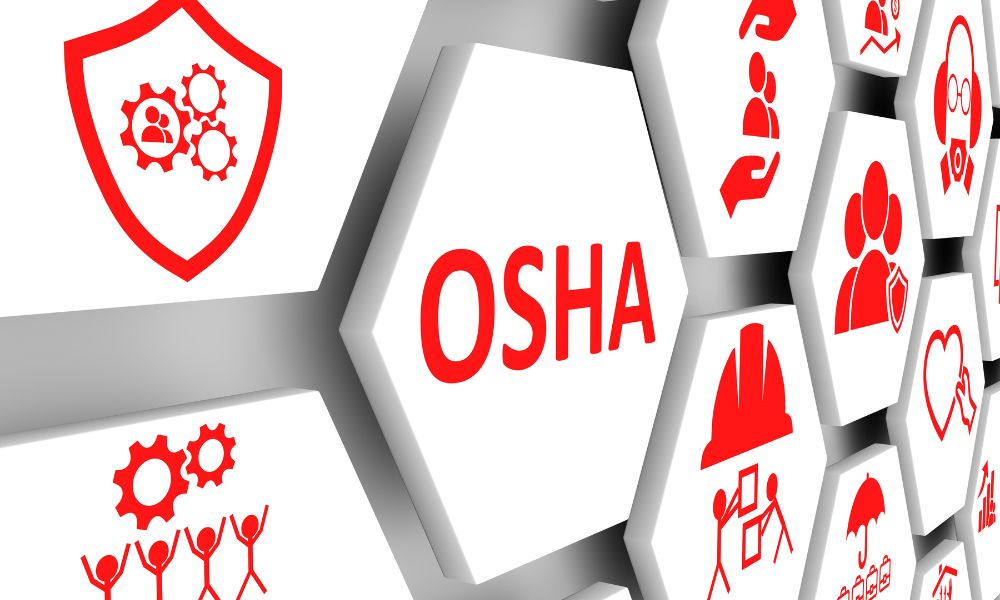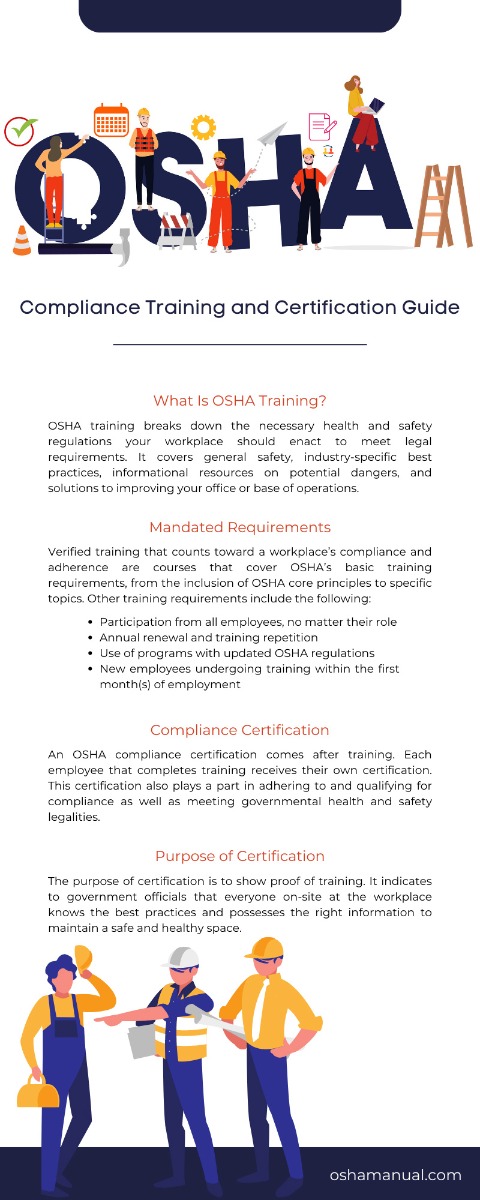
Job sites of all industries, shapes, and sizes—from clerical offices to healthcare services—influence and enhance society. They provide a specific function in the community and give people a purpose. The Occupational Safety and Health Association makes sure those workplaces run efficiently and protects those that benefit from and provide the services those job sites offer.
The Occupational Safety and Health Act (OSHA) establishes workplace health and safety standards that the association and Department of Labor deem necessary for ideal working conditions. Workplace health and safety are important in all fields of work, especially in the healthcare industry. Here is a brief OSHA compliance training and certification guide to help you grasp the basics of OSHA.
OSHA Training
OSHA training plays a huge role in achieving an ideal and safe workplace. Not only does it provide education, but it is also a mandated component of OSHA compliance. As a business, complying with OSHA means your workplace meets the legal standards of operating an ethical and optimal work atmosphere.
What Is OSHA Training?
OSHA training breaks down the necessary health and safety regulations your workplace should enact to meet legal requirements. It covers general safety, industry-specific best practices, informational resources on potential dangers, and solutions to improving your office or base of operations.
It entails undergoing specific training and learning more about established OSHA regulations and what those mean in relation to your business. The training includes worksheets, hazard examples, the dos and don’ts of workplace safety, posters, and other essential tools to help your workplace become safer and healthier.
Mandated Requirements
Workplace health and safety isn’t optional. It’s a basic human and worker right. The US Government and the Department of Labor decide the required OSHA training and compliance. The only time this mandate varies is if certain states choose to follow an adapted version or individual state safety plan, like Washington.
Verified training that counts toward a workplace’s compliance and adherence are courses that cover OSHA’s basic training requirements, from the inclusion of OSHA core principles to specific topics. Other training requirements include the following:
- Participation from all employees, no matter their role
- Annual renewal and training repetition
- Use of programs with updated OSHA regulations
- New employees undergoing training within ten business days of employment
Different Types of Training
There are many types of industries and workplaces, varying in operations, settings, and other work conditions. The different work environments and practices mean each workplace faces differing exposures and dangers, requiring varying safety plans.
OSHA splits workspaces into multiple categorical divisions split from A to J, organizing industries into specific groups. The main OSHA divisions are the following:
- Division A: agriculture, forestry, and fishing
- Division B: mining
- Division C: construction
- Division D: manufacturing
- Division E: transportation communications, electric, gas, and sanitary services
- Division F: wholesale trade
- Division G: retail trade
- Division H: finance, insurance, and real estate
- Division I: services
- Division J: public administration
For example, health care–related workplaces fall under the services division in group 80. Postal services fall under Division E, group 43. Each type of work field and location falls under a specific category with certain health and safety regulations that determine their OSHA training.
Training Process
The overall training process includes specific lessons on industry-relevant topics, worksheets and other educational materials, and safety emergency plans. Some OSHA training kits include tests.
Compliance Certification
An OSHA compliance certification comes after training. Each employee that completes training receives their own certification. This certification also plays a part in adhering to and qualifying for compliance as well as meeting governmental health and safety legalities.
Purpose of Certification
The purpose of certification is to show proof of training. It indicates to the OSHA administration that everyone on-site at the workplace knows the best practices and possesses the right information to maintain a safe and healthy space.
The certification also symbolizes that the individual will do their part in keeping the working conditions within their control in compliance with OSHA standards. Possession of a certificate also aids in passing OSHA inspections.
Certification Process
Certificates are processed after completion of training. Online training courses process certificates faster than in-person courses, as they involve fewer steps. However, certificates from any verified course, no matter the certification process, adhere to OSHA’s compliance and recordkeeping standards.
Workplace OSHA Compliance
OSHA compliance involves three main procedures: training, certification, and inspection. Each step ensures workers, employers, and everyone involved at a specific workplace knows the dangers of their job and surroundings, prevention methods, and emergency action plans.
OSHA covers all aspects of workplace health and safety, from physical dangers to social discrimination. Complying with OSHA means enhancing your workplace’s health and safety in all forms, creating ideal working conditions.
Violations and Consequences
Breaching health and safety standards comes with a lot of consequences. It puts workers and customers at risk, produces unethical practices, and negatively impacts your company’s reputation.
In states that fall under OSHA ordinances, there are even legal repercussions. Failing to meet OSHA standards can lead to citations, fines, and sometimes jail time, depending on hazard severity.
Proponents of Successful Compliance
Successful compliance involves the following:
- Training completion
- Training documentation
- Implementation of best practices
- Passing inspections
- Continual effort to maintain ideal conditions
- Annual training and updated standard adaptions
OSHA’s regulations—and individual state safety plans—provide the base expectations for workplace health and safety. The more protocols, emergency procedures, and best practices in place, the safer the workplace.
Keep this OSHA compliance training and certification guide in mind when trying to comply with OSHA standards. Create ideal working conditions, optimized workplaces, and a community focused on the well-being of others with successful OSHA compliance and other workplace health and safety practices.
To ensure effective training, successful compliance, and more, get an OSHA and HIPAA compliance kit from us at Gamma Compliance Solutions. We offer training manuals for various healthcare services, including dental offices, veterinary clinics, and general medical offices focused on OSHA compliance, safety in the healthcare field, and HIPAA training. Our kits come in digital and hardcopy selections and offer the latest updates on regulations and requirements.


